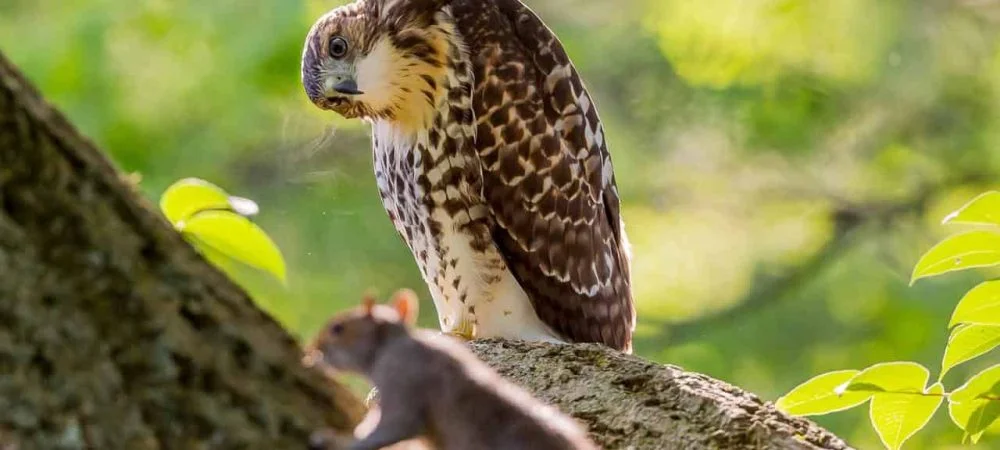
Want to learn more? This book on the Birds of Prey of North America is a fantastic read!
Idaho is renowned for its mountainous landscapes, and immeasurable wilderness and recreation areas.
Boise, the state capital, is encompassed by the foothills of the Rock Mountain and is divided by the Boise River.
Idaho has two dominant climates which are: maritime and continental. Maritime climates experience cool summers and mild winters which are prominent in the northern part of Idaho.
Idaho is home to an impressive 27 state parks! Furthermore, 10 species of hawk can be found throughout the state.
Below, is a profile for each type of hawk that is seen in Idaho, along with their ideal locations and habitats. You’ll learn a great bit of information about each species. While in Idaho, you are most likely to spot the Red-Tailed Hawk!
Want to attract birds of prey to your yard? Take a look at our article!
What Hawks can be seen in Idaho?
Table of Contents
1. Sharp-Shinned Hawk
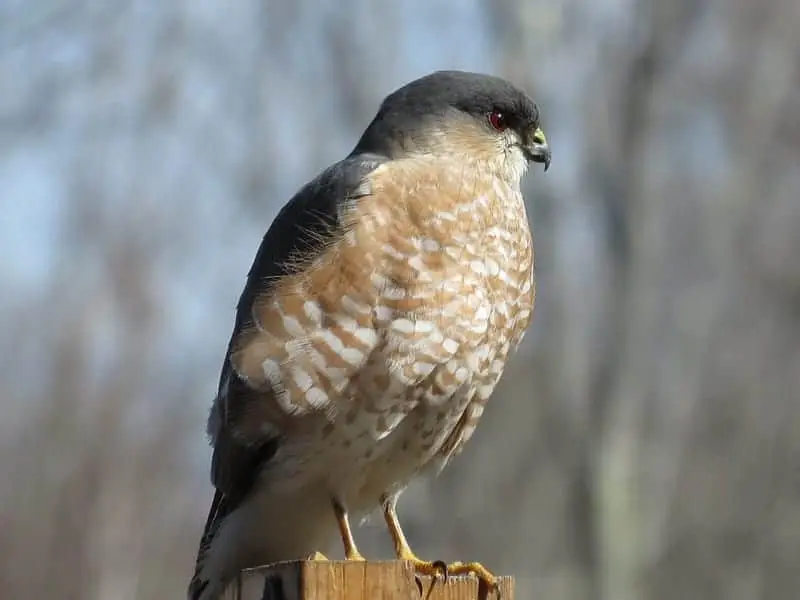
“Sharp-Shinned Hawk” by ‘Dennis Murhpy‘ is licensed under CC BY 2.0
Wingspan
43-56cm
Weight
87-218g
Life Expectancy
3 years
Diet
Robins and Thrushes
The Sharp-Shinned Hawk is a small hawk with short, round wings, and petite feet.
These hawks are actually known to be the smallest in the United States. Matures are gray with a pastel orange color on their underbellies.
Immature hawks are brown and streaky. Sharp-Shinned hawks usually breed in extensive forests among the dense trees. They build their nests in well-concealed places from sizable sticks, twigs, and greenery.
Another characteristic to note about the Sharp-Shinned Hawk is their call. They actually have two calls–one is a repeating ‘kik-kik’ sound, and the other is a shrill squeal.
2. Cooper’s Hawk
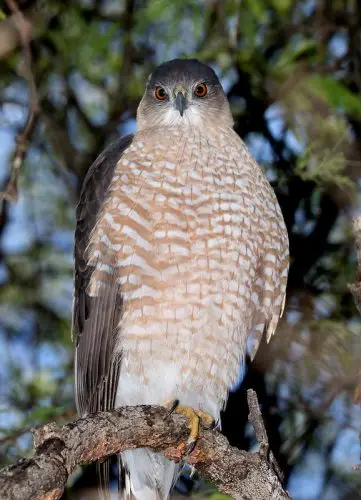
Wingspan
62-90cm
Weight
330-680g
Life Expectancy
Up to 12 years
Diet
Small Birds, Mice & Squirrels
Cooper’s Hawks are medium sized birds and known for their short round wings.
Adult hawks are identified by their beautiful bluish-black wings and backs, with red undeparts.
These birds can be found in wooded habitats, not only forests–even suburban yards! They’ve also been known to take habitat in forests and mountainous areas.
No matter where you see them, they are very territorial creatures, so it is wise to be cautious.
You can most likely see this species in southern Idaho, and they have been observed around the World Center for Birds of Prey and along Boise’s Greenbelt.
They are found year-round throughout Idaho, and the Cooper’s Hawk population is relatively stable.
3. Northern Goshawk
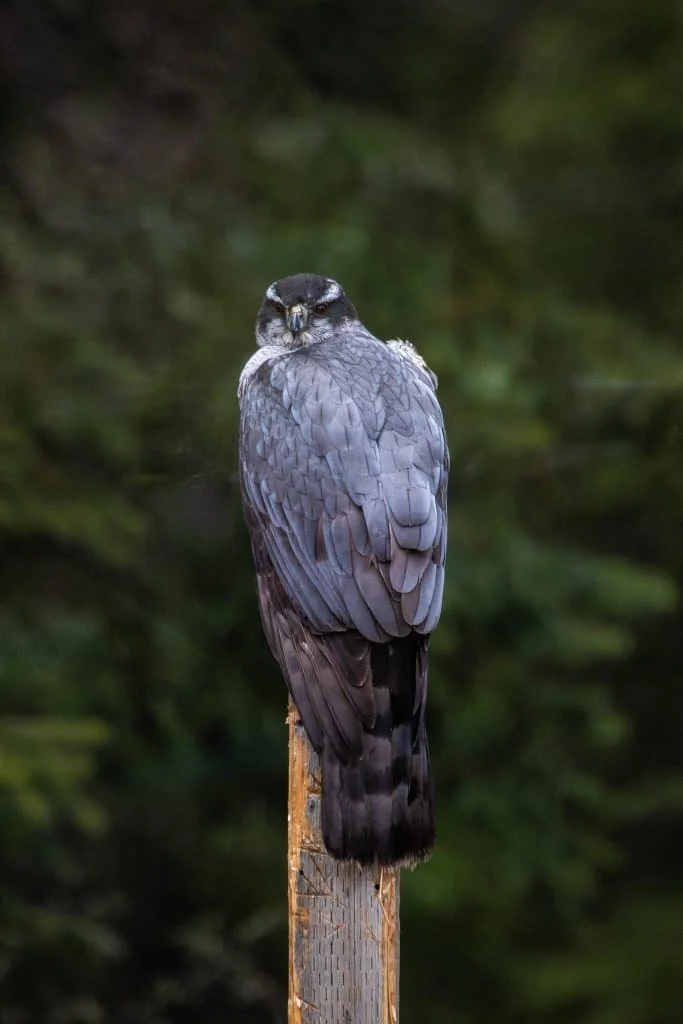
Wingspan
89-127cm
Weight
631-1364g
Life Expectancy
7 Years
Diet
Mammals, reptiles & insects
Northern Goshawks are medium to large in size. The adult hawks tend to be grey while they have notably lighter gray on their underparts.
They also have dark brown tails with a jagged dark bar. Young hawks have brown and very streaky feathers.
Northern Goshawks have a rather alarming call when predators are approaching. They are known for a ‘ki-ki-ki’ sound that quickly repeats.
Goshawks like to make their homes in coniferous forests and can readily be seen in these cone-bearing trees across Idaho, especially in the Sawtooth National Forest.
These hawks are extremely territorial and can become very defensive and even attack humans, so be cautious with your observations!
The breeding period for Goshawks takes place in April, so the spring and early summer months give you the best chance of spotting one.
However, these hawks tend to be year round residents in Idaho, so you could see one at any moment!
4. Red-Shouldered Hawk
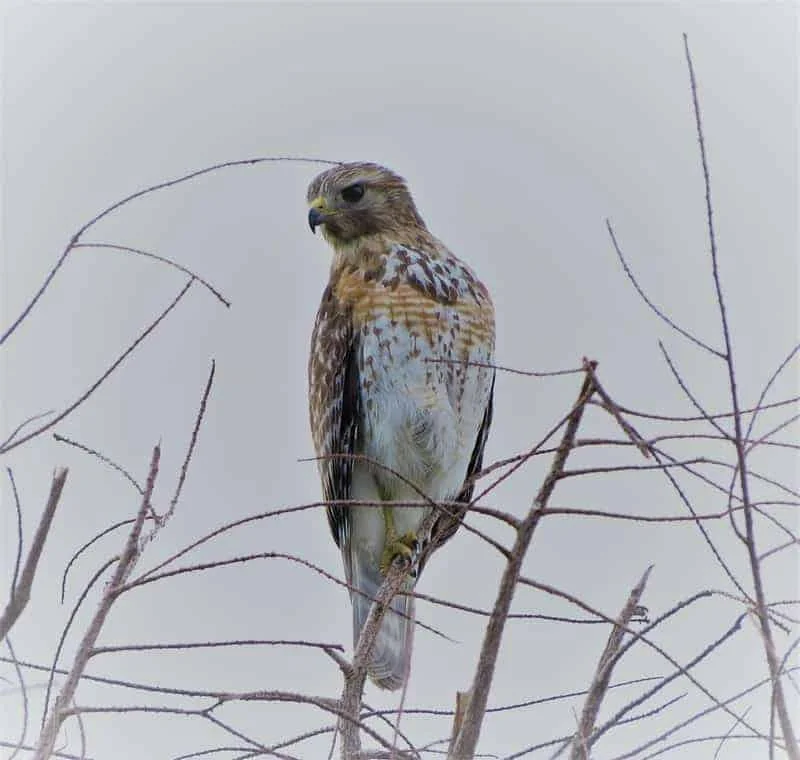
Wingspan
94-111cm
Weight
486g-774g
Life Expectancy
2 years
Diet
Small mammals, reptiles & amphibians
Red-Shouldered Hawks are large birds with a brilliant rich orange color on their barring below and bold black-and-white patterns adorning their wings.
These birds are well-known for their intriguing ‘kee-aah’ call that somewhat favors a whistle. They can be seen soaring over forests or attentively perched in tree branches.
They make their habitat in deciduous woodlands, often near rivers and swamps. They build their nests in the crotches of large trees, usually from sticks and other forest materials.
Red-Shouldered Hawks are also monogamous and territorial. Though these hawks are not as common as Red-Tailed Hawks, they can primarily be seen during the spring and summer.
5. Broad-Winged Hawk
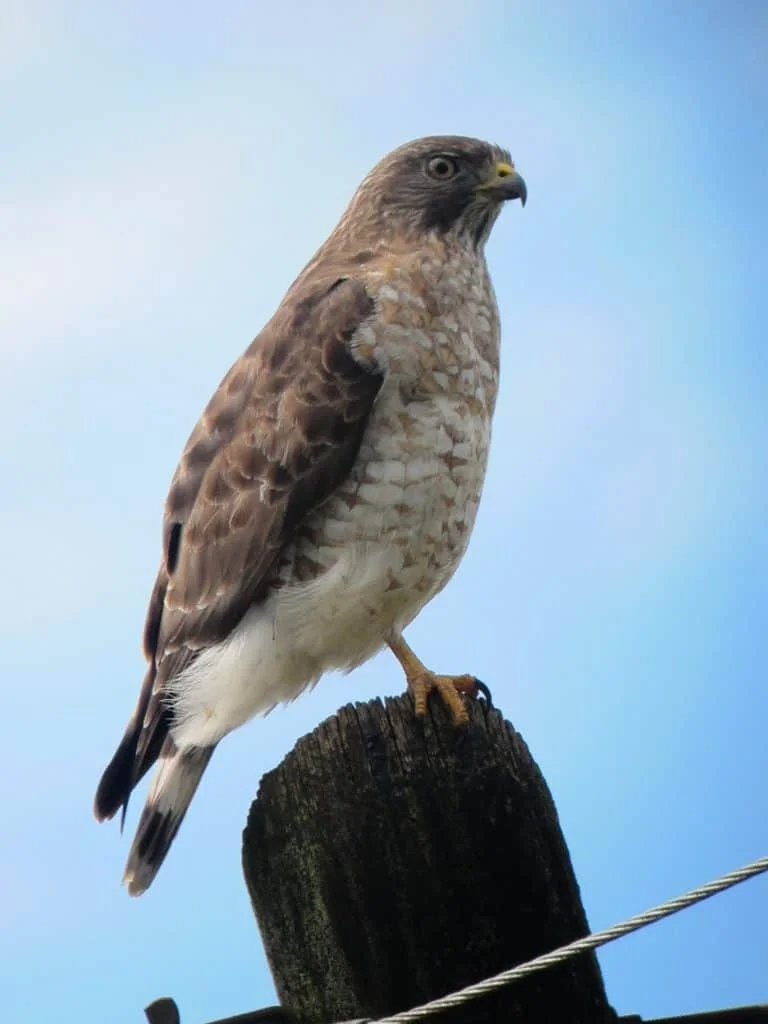
“Broad Winged Hawk” by ‘Felipe Uribe‘ is licensed under CC BY 2.0
Wingspan
81-100cm
Weight
265g-560g
Life Expectancy
Up to 20 years
Diet
Small mammals & insects
Broad-Winged Hawks are classified as being medium birds and have mostly red-brown colored feathers with interesting black and white bars decorating their tails.
Juveniles, like most species, vary in appearance. Immature Broad-Winged Hawks only have light brown feathers.
Broad-Winged Hawks build their nests in large deciduous and coniferous trees. They build platform-like nests using twigs, bark, moss, and plants.
These hawks are known by their whistles, which are quite high pitched! Fascinatingly, the first note of the call is short, with the second note being longer.
The male calls are usually an octave higher than the female calls. You can usually see Broad-Winged Hawks near Ada and Bonneville counties in Idaho.
6. Swainson’s Hawk
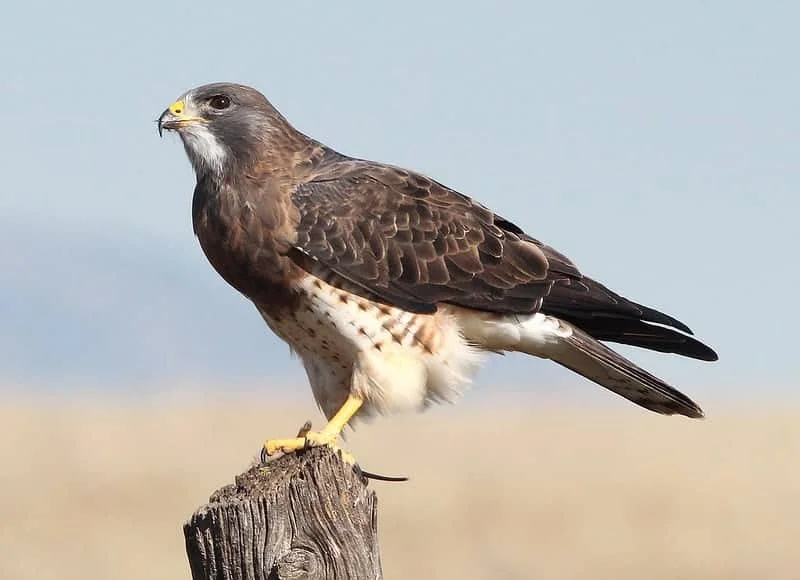
Wingspan
4 feet
Weight
693-1367g
Life Expectancy
16-19 years
Diet
Mammals & Insects
Swainson’s Hawks are a large species of hawk that tend to have shorter tails and larger wings.
These hawks are known to have very dark feathers, and contrasting, bright white underbellies.
You can hear a Swainson Hawk approaching by its shrieking alarm sounding call. Males give a high-pitched squeal usually signaling trouble regarding invaders.
Female hawks however, tend to give a short, low-pitched call. You can see Swainson’s Hawks in open areas where they build nests in grasslands.
There are reported to be more than 16,000 breeding pairs of Swainson’s Hawks in Idaho, so the chances of seeing them are quite high!
They nest mostly in southern Idaho, along the Snake River. However, they do take habitat in parts of northwestern Idaho.
You’ll most likely see them around breeding season in the summer and early fall. After breeding season, by the middle of September, these hawks leave Idaho and journey south.
7. Red-Tailed Hawk
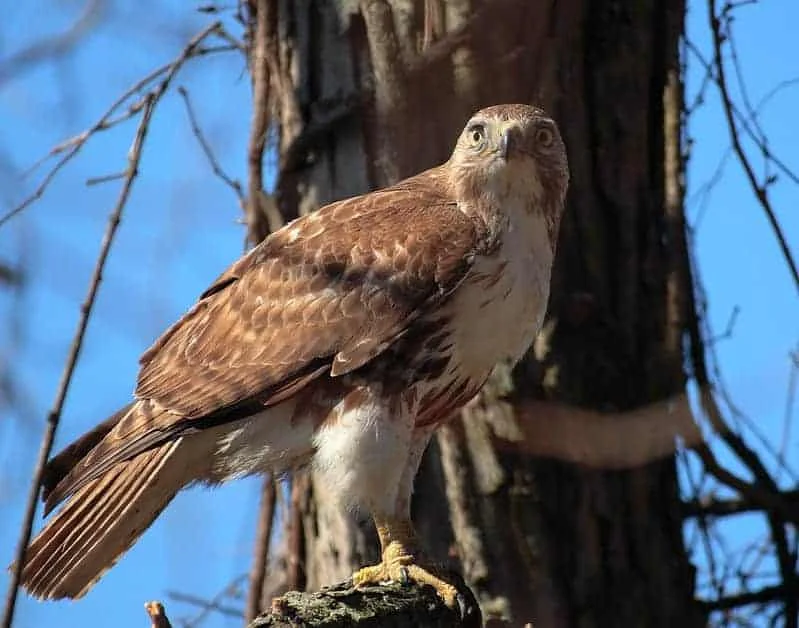
Wingspan
114-133cm
Weight
900-1460g
Life Expectancy
10-15 years
Diet
Small mammals, mice & voles
The Red-Tailed Hawk is easily known as being the largest hawk in North America and known for their stunning red tails, though they are pale underneath and have dark markings on their underparts.
The colors sometimes vary based upon region, and immatures do not have red tails.
These hawks take kindly to telephone poles, light posts, and edges of trees.
They can also be identified by their familiar screams that resemble fictional raptor screams depicted in movies.
One fascinating attribute to note is the male Red-Tailed Hawk’s breeding behaviors. For example, they put on a display and circle at extensive altitudes in order to attract females.
Red-Tailed hawks can easily be spotted in Targhee National Forest and in the Big Desert. They are also prominent in farmlands of southeastern Idaho, especially in autumn and spring months.
8. Rough-Legged Hawk
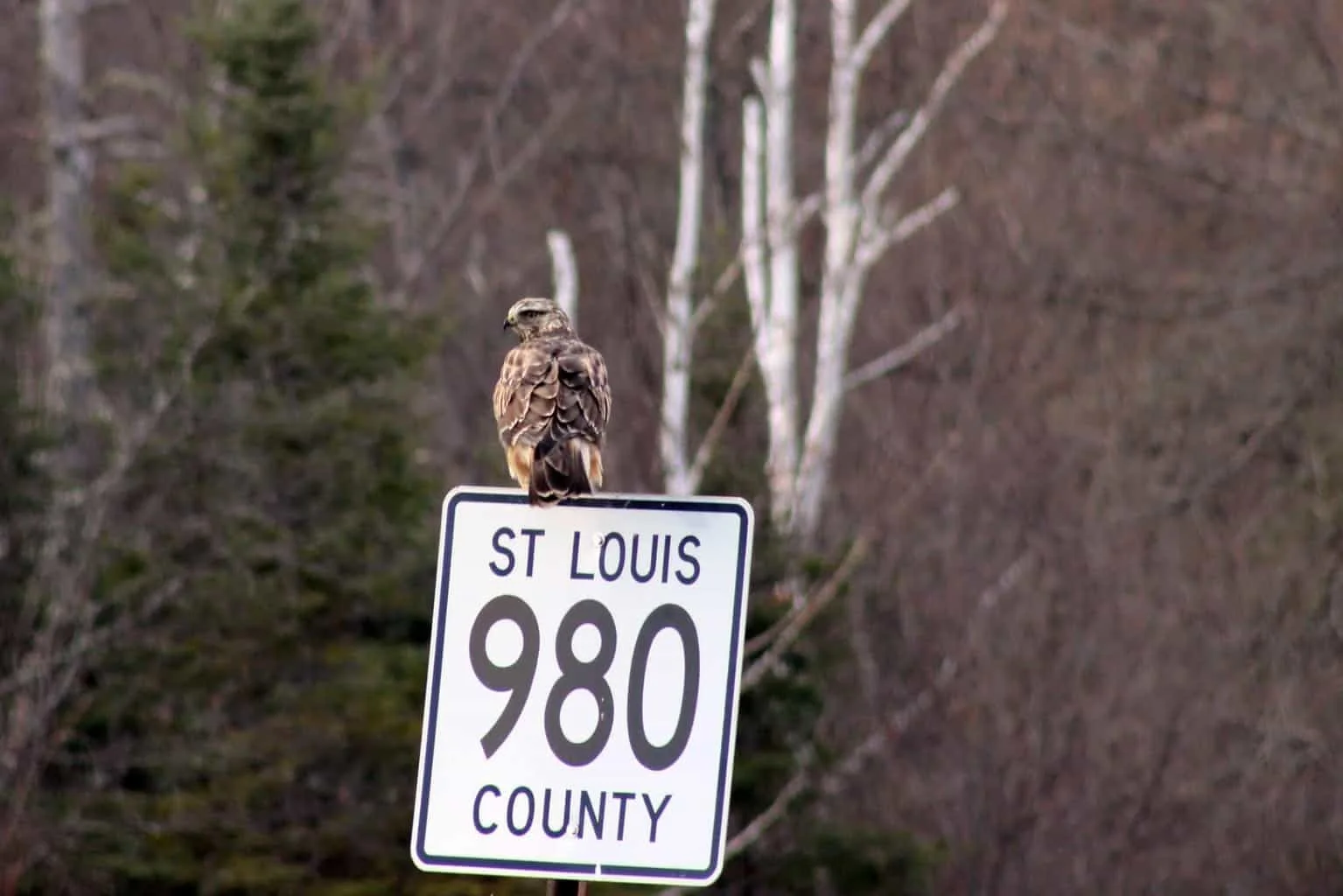
Wingspan
132-138cm
Weight
715-1400g
Life Expectancy
Up to 18 years
Diet
Small rodents
Rough-Legged Hawks are a medium-large species of bird that are highly recognizable due to their elaborate feather patterns.
Rough-Legged Hawks have pale heads with dark underparts. Additionally, these hawks have light tails with notably darker feathers on the tip.
These hawks also feature feathered toes. The population in Idaho is steady and population sizes are strongly influenced by prey populations.
Rough-Legged Hawks are often seen perched and seeking their prey over open fields. They make their nests with sticks and other bark-like materials by open areas such as cliffs.
You can recognize this species by their familiar sound. Rough-Legged Hawks have calls that are similar to a cat in regard to sound, as they have whistles that resemble a cat’s hiss.
In Idaho particularly, Rough-Legged Hawks are the most abundant winter raptor with many hunting in deserts and fields in the winter. During the summer, they nest and raise their young above the Arctic Circle.
9. Ferruginous hawk
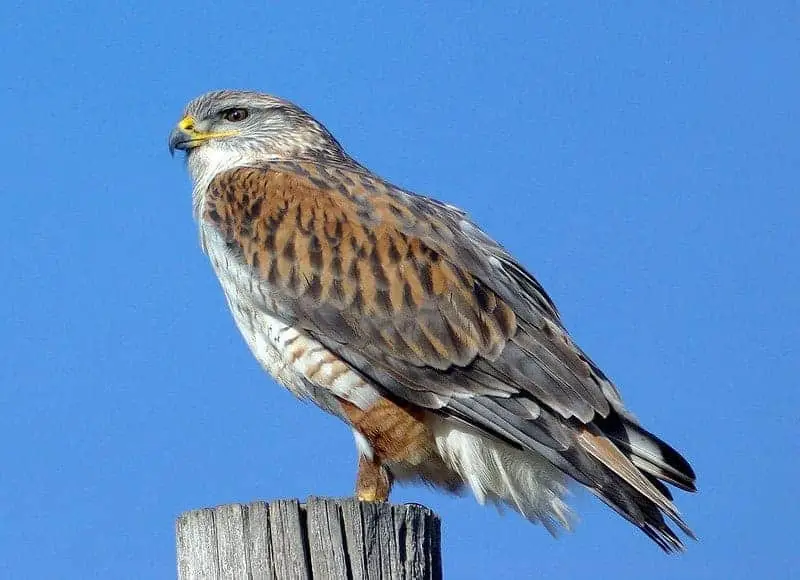
Wingspan
133-142cm
Weight
977-2074g
Life Expectancy
16-20 years
Diet
Small mammals
Named for its rust-colored feathers, the Ferruginous Hawk is medium to large sized and has pale feathers under their wings and their underparts.
As their name suggests, these hawks are also known for their orange colored feathers along their legs and bellies.
Ferruginous Hawks make their homes in open country, grasslands, and even woodlands.
These hawks usually arrive in Idaho around February or March for breeding season.
Though they like open nesting sites, they have been known to build their nests on low hillsides and haystacks.
You’ll hear these hawks approaching by the adult’s scratchy scream, and the juvenile’s short ‘cheep’ calls.
Ferruginous Hawks can typically be found in the Snake River Plain during breeding season. Some hawks live year-round in extreme southern Idaho.
10. Northern Harrier
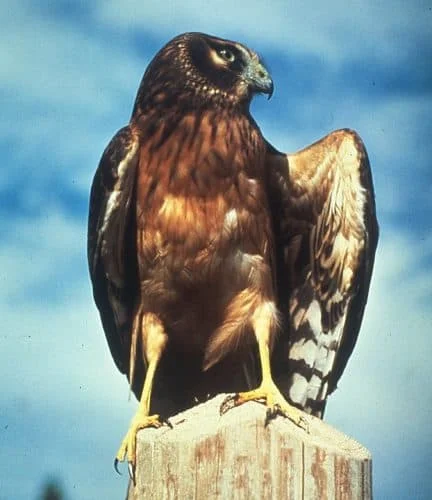
Wingspan
120cm
Weight
390g
Life Expectancy
16 years
Diet
Rodents and small birds
Northern Harriers are a medium sized species of hawk recognized by their distinctive features and behaviors. They have broad wings, but long and narrow tails with horizontal banding.
Adult males are gray on top, white underneath, with usually plain bellies. Females and juvenile hawks are warm brown.
You can find these hawks flying low over fields listening for their prey. You can even hear them give their famed ‘kek-kek’ sounding call when threats are approaching.
Northern Harriers are somewhat populous and are seen in Idaho year-round. They are most commonly seen during winter months, but sometimes present from August to May.

More Articles.
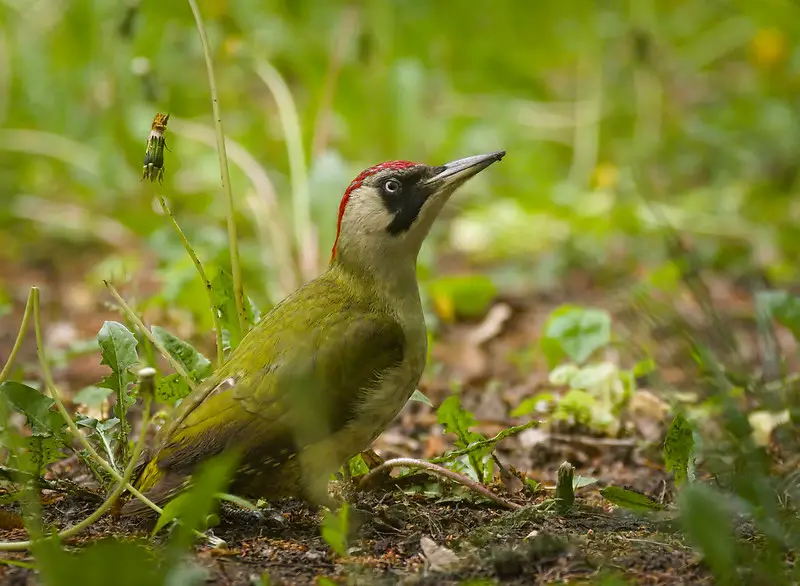
What Woodpeckers can you see in France? (9 Species with Pictures & Sounds)
What woodpeckers can you see in France? There are 9 different species of woodpecker that
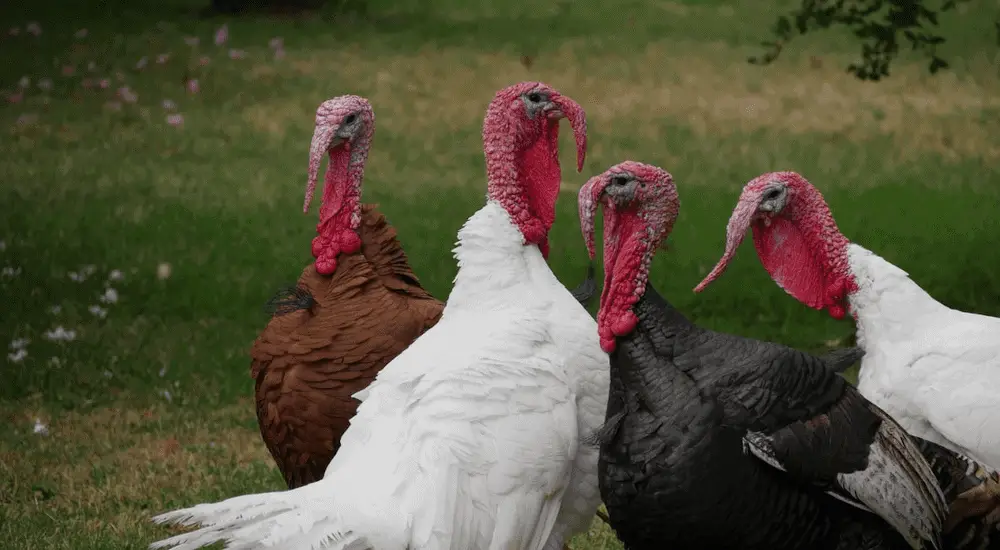
How to attract Wild Turkeys to your yard?
Wild turkeys can be provide quite a fascinating addition to your yard. Providing acorns in
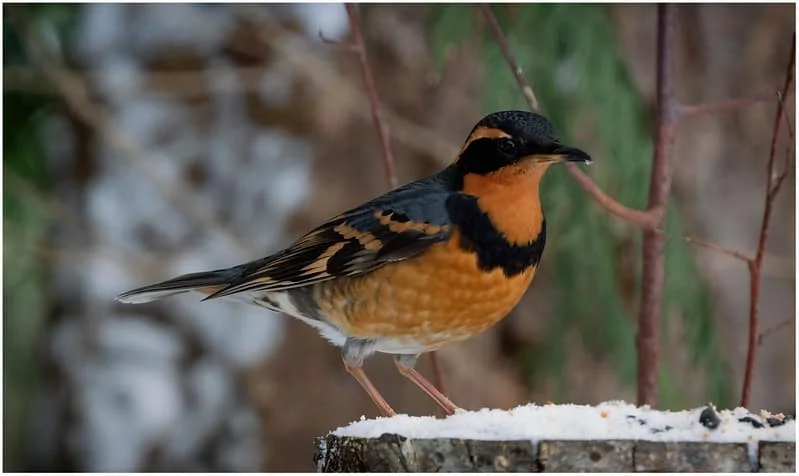
North American Birds with Orange Bellies (15 Species with Sound and Pictures)
North America is filled with many wonderful birds with orange bellies – in fact, there

About Us
We are avid bird-watchers who recently retired, allowing us more time to travel the world. Fortunately, we have managed to visit numerous countries around Europe, Asia, and America. Watching and photographing birds has been a passion for many years and we are making the most of the extra time on our hands!
